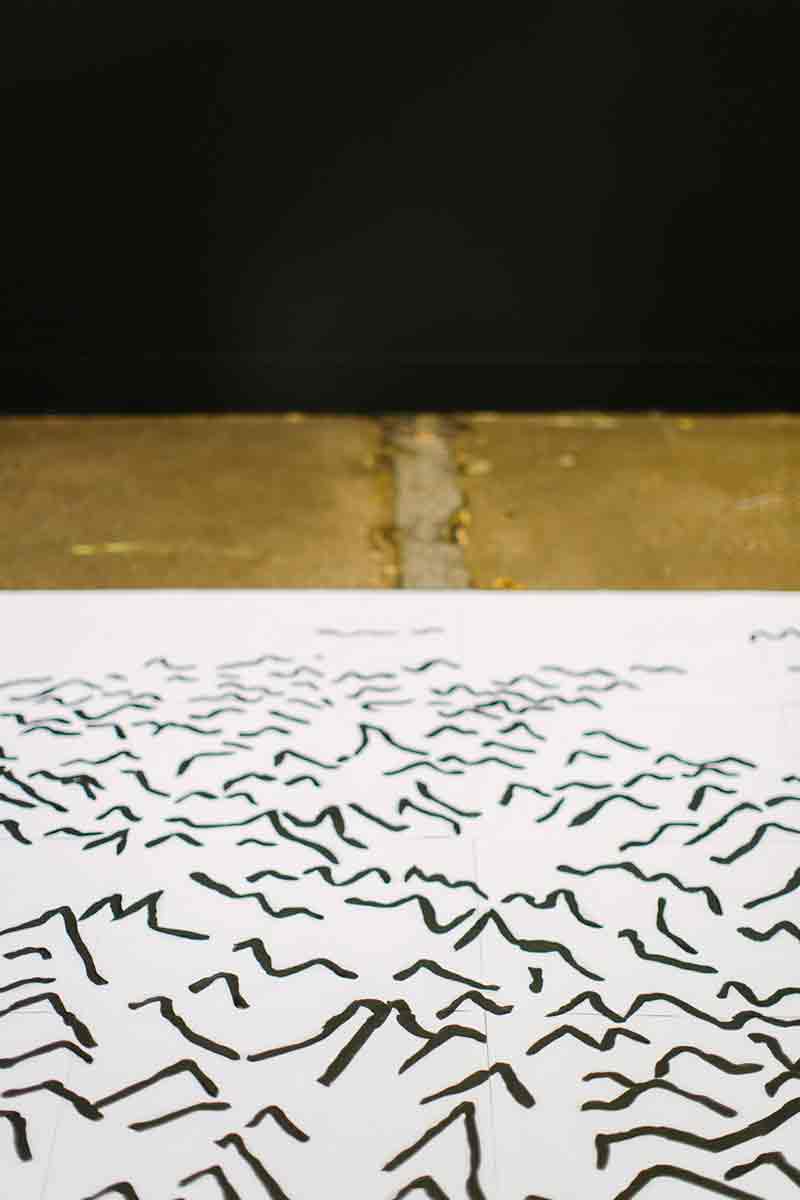
When what you have known and been told your whole life is finally proven by science, is that a win? What if the same voices that confirmed your stories are the ones that had been denying or suppressing your prior knowledge? For artist Brad Harkin, these questions have given rise to a series of projects that seek to examine the relationship between Indigenous knowledge and scientific ”discoveries” in contemporary Australia. Informed conceptually by his Anglo-Australian and Narungga Aboriginal heritage, Cultural Precinct is grounded in poetic, formal and material concerns, underpinned by a complex political and cultural dialogue.
Harkin’s multi-disciplinary project Cultural Precinct, on display at Art Pod, has developed as a further iteration of his solo installation Palm Valley, shown at the Contemporary Art Centre of South Australia’s Project Space in late 2015. Utilising the same materiality developed in Palm Valley, this installation combines visual as well as sonic elements. The installation is framed by a hand-painted topographical representation of the Palm Valley and Finke Gorge landscape, its jagged mountain range outlined on stark white paper covers a significant proportion of the gallery floor. In the centre of the vitrine window sits a light box. Echoing the line drawing, the box contains a three-dimensional model of the same landscape, this time rendered in glistening resin, and partially submerged in water. Under the landscape is a speaker, which emits a series of sonic vibrations. These invisible, seemingly formless vibrations interact with the layer of water in the landscape, producing a rippling effect that mirrors the formal qualities of the landscape. The unexpected sonic effect is mesmerising, creating a tension between the apparently static nature of the landscape, and the transmutable, malleable nature of sound and water.
At the core of Palm Valley and Cultural Precinct is the story of the Cabbage Palms that line the Palm Valley in Central Australia. The palms were presumed to be relics of a prehistoric time when the conditions in the valley were more suited to this tropical species, despite the knowledge from Arrernte people that the palms had been brought to the valley by their ancestors. Recently, DNA-based research has proven that around 15,000 years ago the seeds of the palms were transported from the Katherine region of the Northern Territory, roughly 1,000 kilometres north. This disjuncture between Western science and Aboriginal systems of knowledge is where Harkin’s project operates. The work opens up a line of inquiry that seeks to acknowledge the relationship to the land and its histories that Aboriginal people have maintained for tens of thousands of years, and how quickly this knowledge has been dismissed.
.jpg)
Adelaide City Council’s Art Pod provides a civic and institutional context for Harkin’s project. At the heart of the Council chambers, the Art Pod is a 24-hour gallery, where viewers stand outside the window of the space but are unable to enter. Harkin uses the idiosyncrasies of the space to his advantage, incorporating a soundscape that is played in the exterior thoroughfare between council buildings. In this context the voice of the narrator takes on an authoritative presence, as if providing a public announcement. The voice speaks of the “so-called cultural precinct” in reference to the set of colonial buildings along Adelaide’s North Terrace, which includes the Museum, Art Gallery of South Australia and University of Adelaide. But what does this “cultural precinct” represent to Aboriginal people? How do you speak to a writing of history that has ignored, destroyed or downplayed Aboriginal knowledge, intellectual and cultural property?
Harkin’s work doesn’t presume to answer these questions, but seeks to place them on the agenda. The dark reverberations of the erasure of Aboriginal systems of knowledge continue to have effect in contemporary Australia. His exploration of the story of the palms seeks to acknowledge the complex effects of colonisation, and our responsibility to engage with and interrogate how we build systems of cultural knowledge in Australia.


